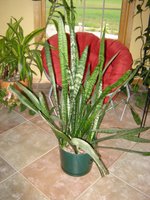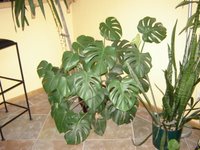Common Name: Sago Palm
Scientific Name: Cycas revoluta
Lighting: Moderate to Bright Light
Water: Low
The Sago Palm is characterized by its plastic like foliage. The green, feather-like branches of the Sago Palm make it a great addition for any room. This houseplant is a great plant to start out with for beginners. The most interesting thing about the Sago Palm is that it really isn't a palm. It is a Cycad. Sago Palms (cycads) are a group of plants that lived during prehistoric times. Cycads are a long-lived group of plants so with little attention your plant should last a very long time (many years).
The Sago Palm prefers bright light, but will also tolerate moderate levels as well. Try to keep the plant near light or else new growth will dramatically lean towards the light. It also is a good idea to turn the plant slightly every couple of days to keep the plants shape.
You should allow your Sago palm to dry out in between waterings. If you are successful at growing cactus, watering this houseplant can follow the same schedule. Their watering also should follow according to the amount of light they receive. If it is placed in an area with lower light levels, you may only need to water it every couple of weeks. If matured foliage begins to yellow you are probably over watering the plant.
This houseplant is pretty hardy. It doesn't seem to have a real temperature preference and do not have any humidity requirements. During dry months, a daily misting may add some extra lift to your plant. The only downfall to this houseplant is that they are extremely slow growers; so do not be discouraged if your plant doesn't appear to be growing.
One downfall to this gorgeous palm, is that it is poisonous to animals and humans. Like so many other plants, it is included in the list of poisonous houseplants.
Please share your comments and experiences with other readers.










